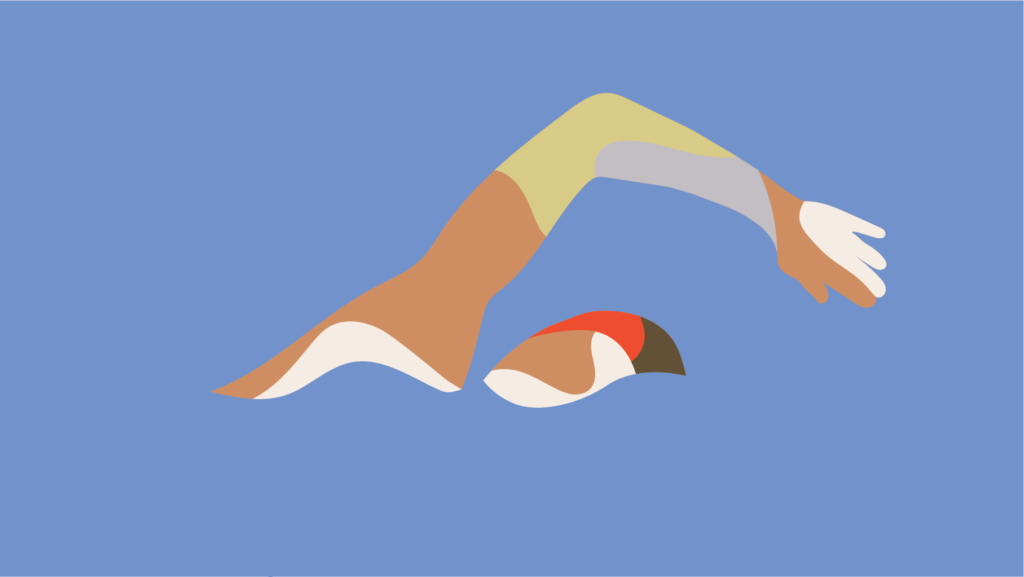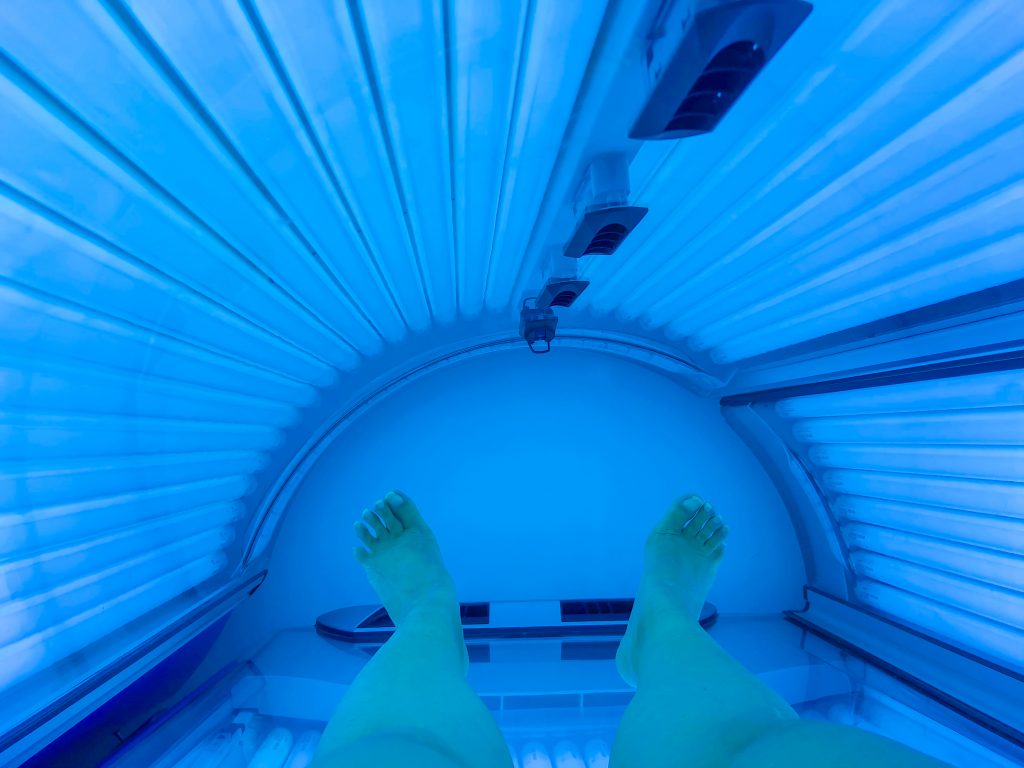Learning Healthier Sun Habits
- A new social media trend is raising concern with dermatologists: ‘Sunburn tattoos’ are created by wearing stickers, sunscreen or tape to mark the skin during sun exposure, which results in a temporary design due to the contrasting skin colors.
- Bottom line, purposely aiming for a quick tan or burn is never a good idea due to the increased risk of skin cancer. While staying out of the sun is the only way to truly protect the skin from the sun’s harmful rays, dermatologists recommend using sunscreen liberally on any body part exposed to the sun to help reduce your risk.
- Avoiding sun exposure during peak hours (or all together), using at least an SPF 30 broad spectrum sunblock and applying sunscreen every two hours while outside can help avoid getting skin cancer, including melanoma, the deadliest type of the disease.
Younger generations, however, may not know that tanning stickers were a trend in the ’70s and ’80s, made famous by the Playboy Bunny sticker, yet that was before society realized the extreme dangers of sun exposure. So in this case, this resurfaced trend is definitely not one to follow, as one commenter shared on a recent TikTok video discussing the topic:
Read More@drdrayzday Sunscreen tattoo? What could possibly go wrong. #suntan #tanning #dermatologist @Ally Haase
“Regardless of how creative or harmless it appears, any sunburn is skin injury,” Memorial Sloan Kettering dermatologist Dr. Anthony Rossi told Fox News Digital in a story published on Monday. “This sunburn tattoo trend still involves deliberate UV damage to the skin, which — over time — can increase the risk of both immediate and long-term consequences.”
SurvivorNet’s Skin Cancer Guide: The Basics
SurvivorNet has covered sun exposure and skin cancer risk extensively via our medical experts. While staying out of the sun is the only way to truly protect your skin from the sun’s harmful rays, dermatologists recommend using sunscreen liberally on any body part exposed to the sun to help reduce your risk.
Dr. Cecilia Larocca, a dermatologist at Dana-Farber Cancer Institute, recommends you use no less than SPF 30 and reapply it every two hours. Your sunscreen should also be broad spectrum, says Dr. Larocca, meaning it covers both UVB and UVA rays.
According to Dr. Larocca, people usually only get about 50% of the SPF on the label. So, if you’re using SPF 60, you’re really getting closer 30 SPF of protection. To make sure you’re getting the right protection, she also recommends using sunscreen every two hours and wearing protective clothing, such as a hat and sunglasses.
Choose the Right Sunscreen and Use It Often
Here are some top tips for protecting yourself in the sun:
- Avoid sun exposure during peak hours when the sun’s rays are strongest, between 10 a.m. and 4 p.m.
- Apply sunscreen 15 minutes before going outside
- Use at least SPF 30 broad spectrum sunblock and reapply every 2 hours when outdoors
Following these guidelines will help reduce your risk of skin damage and future skin cancer.

Protecting Your Skin From Skin Cancer
Dr. Dendy Engelman, a board-certified dermatologic surgeon and associate at Manhattan Dermatology and Cosmetic Surgery, also previously shared some simple steps with SurvivorNet:
- Sun avoidance during peak hours: This means from 10 a.m. to 2 p.m. It doesn’t mean you should never go outside during the middle of the day, but make sure you’re protected when you go outdoors.
- Cover your skin and eyes: Wearing a wide brim hat or sunglasses will protect your face, the top of your head, your ears and the delicate skin around your eyes.
- Wear an SPF of 30 or higher: Plenty of facial moisturizers have SPF built into them. Dr. Engelman recommends reapplying every few hours, or after excessive sweating or swimming.
- Get an annual skin check: If you happen to notice anything out of the ordinary in between checks, schedule an appointment to talk to your doctor as soon as possible.
- No-go to tanning beds: Tanning beds can significantly increase your risk of developing melanoma. If you feel like you’re just too pale, Dr. Engelman recommends a sunless tanner.
Top 5 Ways to Protect Your Skin From Skin Cancer
Most Melanomas are Caused by Sun Exposure
Melanoma is the most aggressive form of skin cancer. Ninety percent of melanomas are caused by ultraviolet radiation from the sun. That means you’re at risk if you spent excessive amounts of time in the sun, even as a child. If you ever got scalding sunburns or were a fan of tanning salons (or presently, tanning stickers), it’s important to get your skin checked out.
RELATED: 3 Skin Cancer Myths, Busted: Can One Bad Sun Burn Cause Cancer?
You’re most likely to find melanoma on sun-exposed areas of skin, like your face, neck, arms, and legs. However, melanoma can also be found in other places you’d least expect including the palms of your hands, soles of your feet, eyes, mouth, and under your nails.

The most important thing to look out for when it comes to finding melanoma is a new spot on your skin or a spot that is changing in size, shape, or color, SurvivorNet’s medical experts say.
When you check your skin, use the acronym ABCDE as your guide:
- Asymmetrical moles: If you drew a line straight down the center of the mole, would the sides match?
- Borders: Is the mole irregular or jagged?
- Colors: Are there multiple distinct colors in the mole?
- Diameter: Is the mole larger than 6 millimeters (mm), about the size of a pencil head eraser?
- Evolution: Has the mole’s color, shape, or size changed over time?
Learn more about SurvivorNet's rigorous medical review process.

